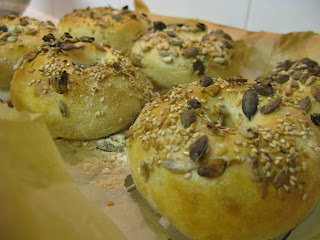For those of you who were at the Breadmaking class, here they are: the photos that the sunday papers would love to get their hands on:

 "Look at those sexy slashes!"
"Look at those sexy slashes!"

 SlowFoodies: Please feel free to peruse the rest of my blog and try some of the recipes--I'd love to know what you think!
SlowFoodies: Please feel free to peruse the rest of my blog and try some of the recipes--I'd love to know what you think!



